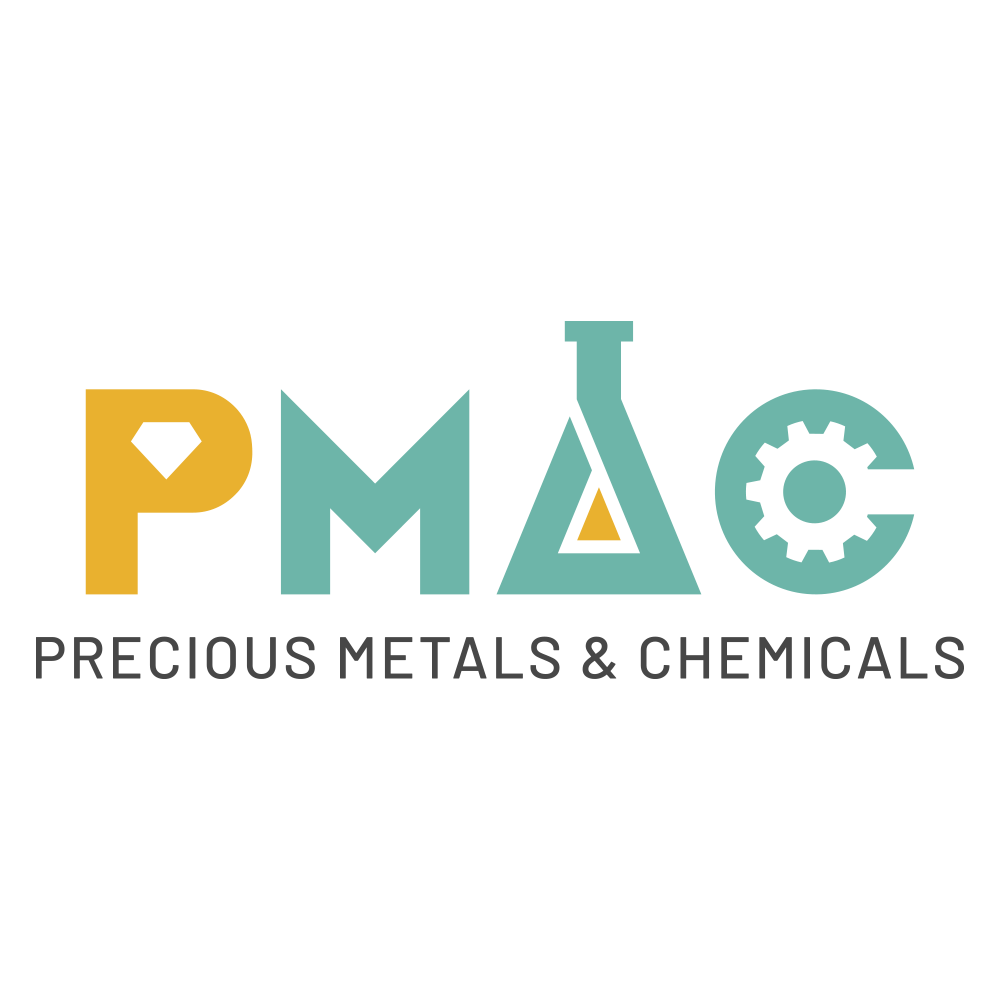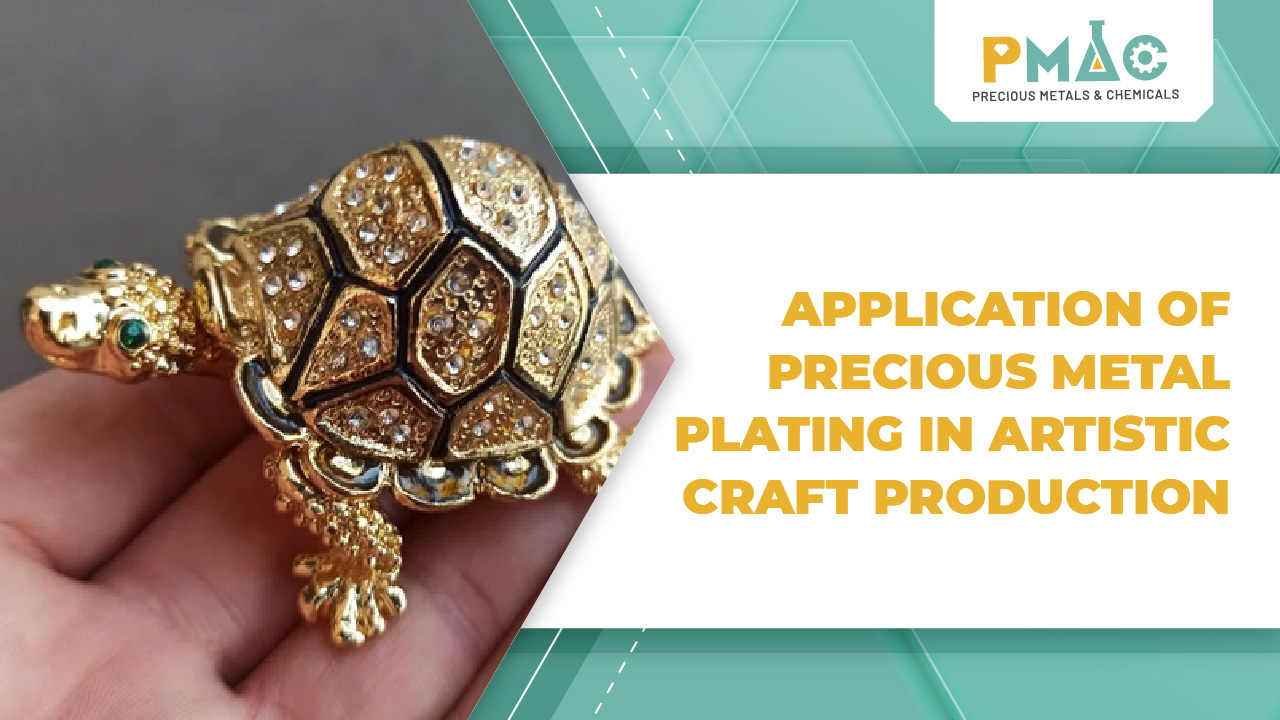The handicraft industry is steadily asserting its position not only domestically but also in the international market, thanks to its sophistication, diversity, and rich cultural identity. However, to meet the increasing demand for aesthetics, durability, and economic value, manufacturing facilities must combine traditional craftsmanship with modern technology. One solution that offers outstanding effectiveness is precious metal plating. This technique helps products become shiny and more high-end, while also extending their lifespan and utility value. The following article from PMAC will help you better understand the concept of plating, its applications, processes, and prominent technologies in this field.
1. What is Precious Metal Plating?
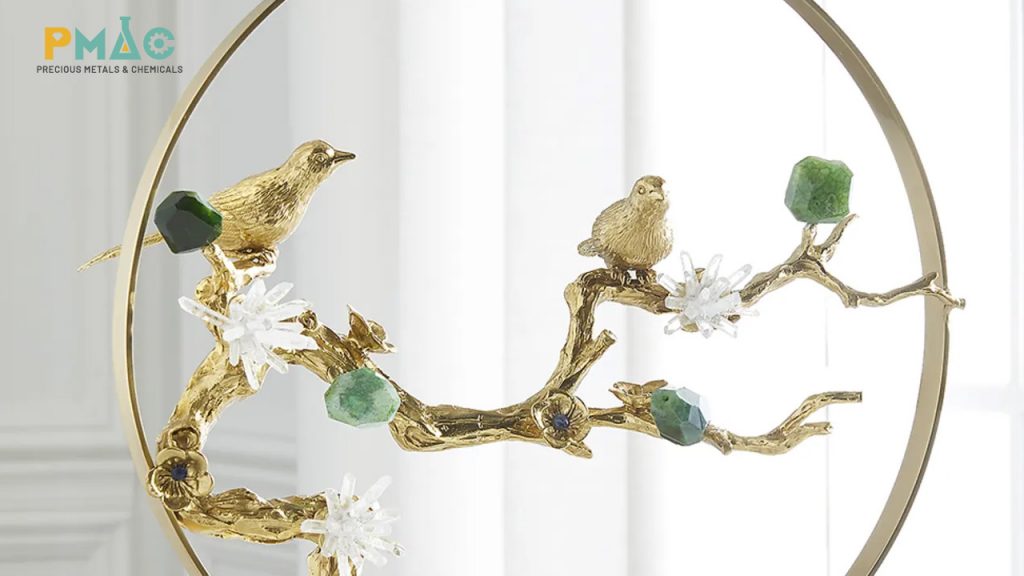
Precious metal plating is the process of coating a product’s surface with a high-value metal such as gold, silver, rhodium, or palladium to enhance aesthetics and protect the product from oxidation and corrosion. This is a common surface treatment method in many industries, including jewelry, electronics, medical, and especially handicrafts.
Depending on the base material and intended use, plating can be performed using various methods: electroplating (using electric current), electroless plating (using chemical reactions), and vacuum plating (PVD – Physical Vapor Deposition). Regardless of the method, a common requirement is thorough surface preparation before plating to ensure the adhesion and uniformity of the metal coating.
2. Application of Precious Metal Plating in Handicraft Production
Precious metal plating is a powerful tool to upgrade the quality and value of handicraft products. In this industry, the plating layer is not merely for decoration but also serves a protective role, helping products maintain their beauty for a long time.
Specifically, gold plating is widely applied in creating spiritual statues, feng shui items, or gold-plated home decor such as lamp bases, handles, and vases. Silver plating is suitable for handcrafted jewelry, fashion accessories, keychains, and paper clips—products that require a bright white, delicate shine. Rhodium is often used to plate over silver, helping the product resist tarnishing over time, and is very common in high-end products or those exported to markets like Japan and Europe. Palladium is favored in modern designs, helping to create a luxurious gray metallic look.
Furthermore, production workshops also utilize plating to transform traditional handicraft products (made of plastic, porcelain, ceramic, wood, etc.) into high-value souvenirs capable of competing with foreign brands in the international market.
3. Common Precious Metals Used in Handicraft Plating
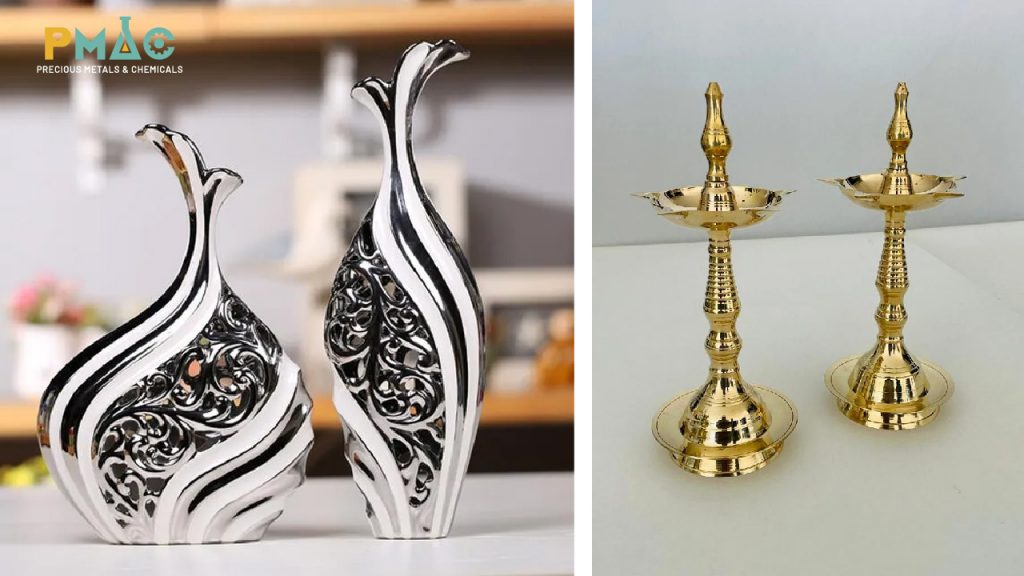
Depending on the product’s characteristics, target customers, and intended use, artisans will choose the appropriate plating metal.
- Gold: The most commonly used precious metal in the handicraft plating industry. Gold plating provides a luxurious appearance and warm metallic luster, suitable for feng shui items, decorative statues, and high-end accessories. 24K gold plating offers a brilliant yellow, while rose gold or 18K gold are often chosen for a modern style.
- Silver: Easy to apply and less expensive than gold, silver has a bright white color and excellent light reflectivity. Silver is often used for plating handcrafted jewelry, souvenirs, or handmade products as it imparts a delicate feel and pairs well with other materials.
- Rhodium: A metal more expensive than gold, with high hardness, scratch resistance, and tarnish resistance. Rhodium is used to coat silver or white gold layers to enhance shine and durability, especially common in export jewelry.
- Palladium: Has a metallic gray color similar to platinum but at a lower cost. Palladium is durable and bright, used in high-end products requiring precision and luxury, such as watches, corporate gifts, or premium interior details.
4. Process of Precious Metal Plating in Handicraft Production
The plating process, while not overly complex, requires precision, cleanliness, and strict control to ensure a high-quality, evenly colored, and strongly adhesive plating layer.
- Step 1 – Surface Preparation: Clean dirt, oil, and oxide layers by mechanical grinding, chemical degreasing, and DI water rinsing. This stage is crucial because if the surface is not clean, the plating layer will not adhere properly and may easily peel off.
- Step 2 – Underplating: Apply a base metal layer, such as copper or nickel, to create an intermediate buffer layer, helping the precious metal adhere more easily to the product. The undercoat also brightens the surface and prevents chemical reactions between the base layer and the precious plating layer.
- Step 3 – Precious Metal Plating: The product is placed in a plating bath containing precious metal ions. Factors such as electric current, temperature, and plating time will be adjusted according to the type of metal and product requirements.
- Step 4 – Rinsing and Post-Plating Treatment: After plating, the product is thoroughly rinsed with deionized water to remove residual chemicals, then dried. Some products will be coated with an additional nano-protective layer to enhance durability and scratch resistance.
5. Modern Plating Technologies in the Handicraft Industry
The development of plating technology has helped the handicraft industry save costs, increase productivity, and improve product quality.
5.1 Electroplating
This is a traditional method but still widely used due to its flexibility, high efficiency, and control over the plating layer thickness. However, this method requires careful wastewater treatment to ensure environmental safety.
5.2 Electroless Plating
This method does not use electric current and is applied to non-conductive or complex-shaped surfaces such as ceramic statues, plastic items, and glass. Its advantage is a thin, uniform plating layer that adheres well to all surfaces.
5.3 Vacuum Plating (PVD)
This is an advanced technology used in high-end products. It does not use chemicals, and the plating layer is extremely durable, bright, and can create diverse colors (gold, bronze, black, titanium blue…). PVD is suitable for export manufacturers or those with high safety and aesthetic requirements.
5.4 Nano Coating After Plating
This is an increasingly popular step to protect the plating layer from tarnishing, moisture, and environmental impacts. Nano helps products stay shiny longer and makes them easy to clean during use.
6. Reputable Precious Metal Plating Company – PMAC
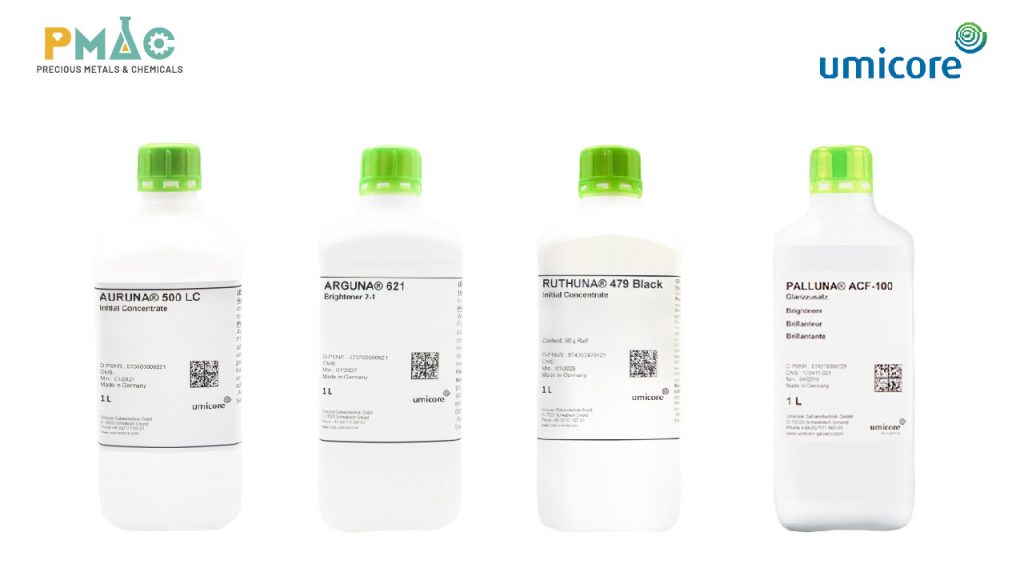
In Vietnam, PMAC – DC Technologies Joint Stock Company is a leading reputable unit specializing in providing comprehensive solutions in the field of precious metal plating for the handicraft industry.
- Plating Equipment: PMAC supplies a full range of plating tanks, chemical filtration systems, electroplating machines, and auxiliary equipment such as stirrers, current and temperature control units… suitable for scales from small workshops to large factories.
- Genuine Plating Chemicals: All gold, silver, rhodium, and palladium plating chemicals provided by PMAC have clear origins, imported from reputable brands such as the Umicore group, ensuring the plating layer achieves brightness, adhesion, and color stability over time.
- Consulting – Training – Technical Maintenance: PMAC not only sells equipment but also acts as a long-term technical partner, consulting on plating line installation, training technical workers, and providing on-site maintenance support. With over 5 years of experience in the industry, PMAC deeply understands the technical and aesthetic requirements of each handicraft product line.
Conclusion
Precious metal plating is opening up a new direction for the handicraft industry – where modern technology combines with traditional values to create products that are not only beautiful and durable but also possess high commercial value. From a small statue, a bracelet to a vase or a souvenir keychain, all can be elevated in prestige when the correct plating techniques are applied.
If you are an artisan, a workshop owner, or a business operating in the handicraft sector, investing in precious metal plating technology is a strategic step to enhance your competitiveness. And PMAC is the reliable partner to help you realize that.
